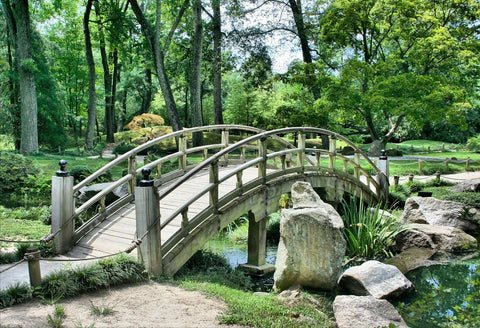Organizing a treasure hunt in your garden may be a fun pastime for both children and adults. It not only allows you to spend time outside, but it can also help you develop problem-solving and collaborative abilities. Here are some ideas for hosting a treasure hunt in your garden.
Table of Contents
Prepare for the Treasure Hunt
The first stage is to devise a treasure hunt strategy. Choose a theme and the type of treasure you want to conceal. Small rewards such as candies, toys, or even a unique gift for the winner can be hidden. Consider the participants’ age group and alter the difficulty level of the hints accordingly. Make sure your garden has adequate hiding spots for the clues and the treasure.

Make the Clues
Create the treasure hunt’s clues. To guide the participants to the next clue, you can utilize riddles, puzzles, or even a map. Make the hints complex but not so difficult that they get frustrated. Younger youngsters, use basic words, while older participants, use more complicated clues. Decorate the clues with colorful drawings or stickers and write them on pieces of paper or cardstock.
Keep the Clues Hidden
Hide the clues in various locations across your garden. They can be hidden in flower beds, under rocks, and even in trees. Make certain that the clues are well hidden yet still obvious enough to be found. Keep an eye out for any potential hazards in your yard, such as sharp objects, thorny bushes, or poisonous plants. Make a list of the hiding spots so you can remember where you put each clue.

Begin the Treasure Hunt
Gather the participants and explain the treasure hunt regulations. Give the first clue to each participant and let them begin the hunt. Make sure the participants are supervised and keep within your garden’s limits. To give a sense of urgency and excitement, set a time limit for the treasure search.
Keep an eye on the progress
Keep track of the treasure hunt’s progress to verify that all participants are on track. You can do this by checking in with them regularly or by having someone covertly follow them. If you notice that certain individuals are having difficulty, you might offer ideas or support to help them progress.
Finish the Treasure Hunt
Gather the competitors and celebrate the winner once all of the clues have been uncovered and the treasure has been discovered. As a show of appreciation, you might also give each participant a modest reward or certificate. Spend some time talking about the clues and the tactics used to solve them. This allows individuals to learn from one another and enhance their problem-solving abilities.

Cleaning Up
Following the treasure hunt, tidy up your garden and remove any hiding places or hazards that were employed during the treasure hunt. If you utilized paper hints, make sure to pick them up and properly dispose of them. Use this time to perform some gardening and make any repairs or changes to your garden.
Choose a fun theme and stick with it
Choosing a theme for a kids’ treasure hunt can seem like more work than it’s worth to the inexperienced. In actuality, it greatly simplifies decision-making. Use the theme to inspire your garden activities for kids, decorations, hints, and food. When it comes to a garden treasure hunt, there are a plethora of intriguing (and family-friendly) themes to choose from. A typical pirate theme lends itself wonderfully to buried treasure, but anything involving the hunt for elusive finds works as well. Safaris, dinosaur digs, and investigative work are all wonderful places to start. If you’re unsure, turn it on its head and let your child choose the theme; the rest is up to you.

Make up a story
Don’t worry, your plot doesn’t have to be overly complicated; just enough to offer your happy scavengers a reason to go in search of treasure.
Maybe they’re “looking for potion ingredients” to “rescue someone” or “important items left by fairies” that will lead them to a “magic” gift. The stakes don’t have to be too high, but having a grand prize is a fantastic approach to steer your seekers in the right direction. Most shows and movies include at least one significant item that can be used to motivate your treasure hunt group. My buddy threw a beautiful Moana celebration where kids hunted for the “heart of Te Fiti” (which was swiftly produced from air-dry clay). Plus points if the award is something that everyone can enjoy. Make a cardboard treasure chest packed with chocolate coins and plastic jewelry, or guide children in an end-of-party activity such as viewing a movie, dancing to music, or revealing a cake. If in doubt, begin with the reward and work your way backward.
Organizing a treasure hunt in your garden may be a fun and exciting activity for everyone. It allows you to spend time outside and fosters problem-solving and cooperation abilities. By following these guidelines, you can use your yard to host a fantastic treasure hunt that everyone will enjoy.
